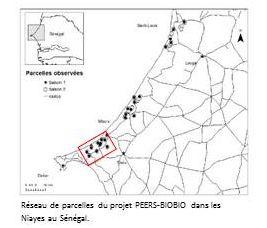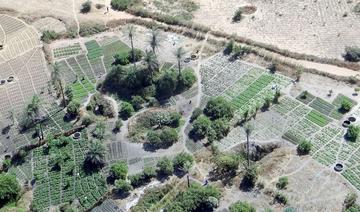Niayes
Last update: 8 November 2017
As part of the PEERS-BIOBIO project supported by the IRD, the team working on integrated production and protection in horticultural agro-ecosystems (2PIA) headed by Prof. K. Diarra (FST-UCAD) conducted an agronomic diagnosis of a network of around a hundred tomato and cabbage plots.
Field observations and producer surveys served to determine the incidence and insecticide resistance of the key insect pests in the three zones studied, and the impact of natural enemies and farming practices, particularly insecticide treatments. A 250-km² zone in the southern Niayes (Fig.1) was selected for a study of the effect of the landscape context on cabbage moth, Plutella xylostella, population levels. A similar study is under way on the tomato leaf miner, Tuta absoluta.
Last update: 8 November 2017


